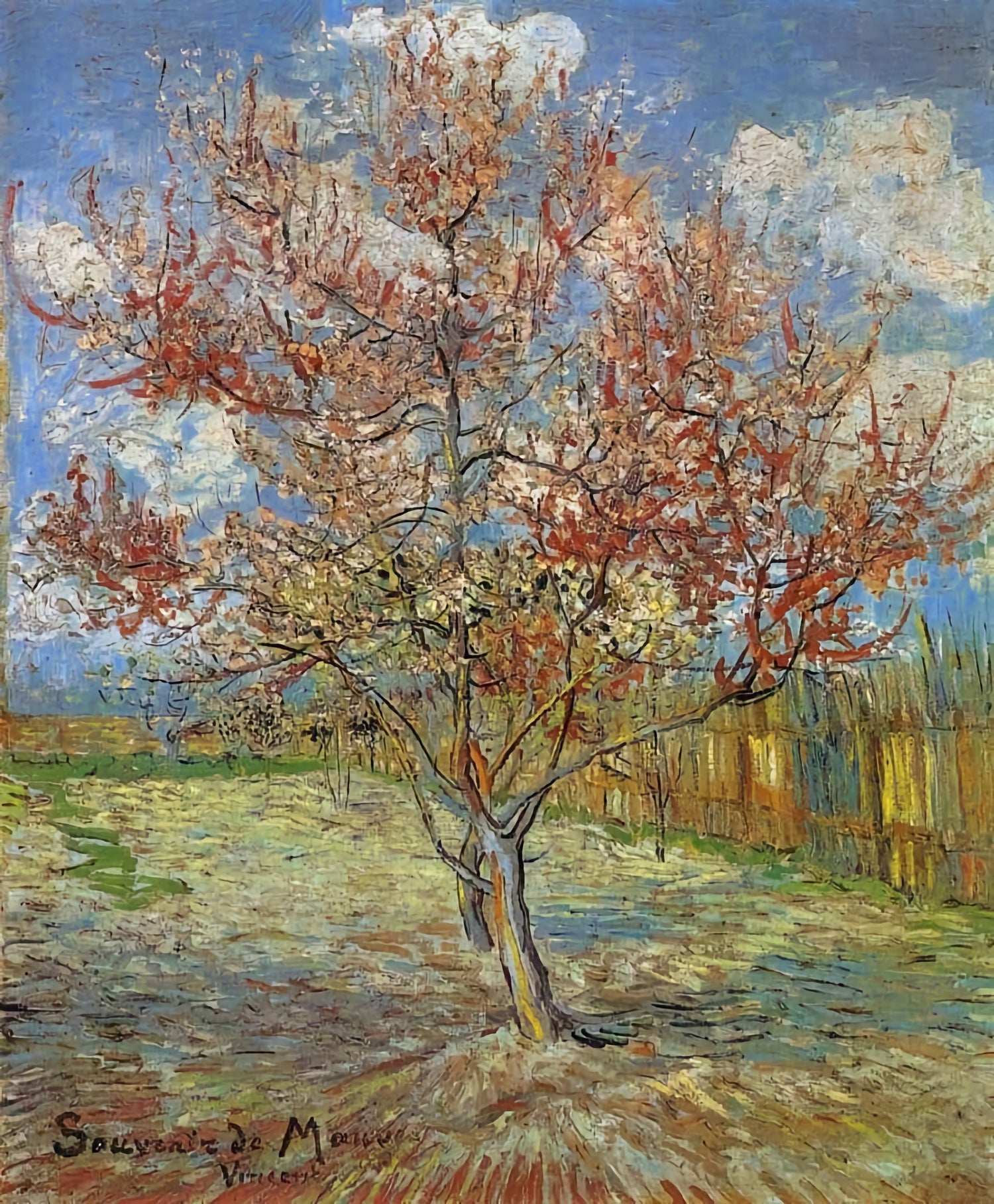
Pink Peach Trees, 1888
Vincent van Gogh’s "Pink Peach Trees, 1888"—also known as Souvenir de Mauve—is a vibrant and emotionally resonant landscape that captures the fleeting beauty of spring in the South of France. Painted during van Gogh’s stay in Arles, this artwork is one of a series of paintings dedicated to blossoming fruit trees, symbolizing renewal and hope. It also served as a heartfelt tribute to Anton Mauve, van Gogh’s cousin-in-law and early artistic mentor, who had recently passed away. In "Pink Peach Trees, 1888", van Gogh masterfully depicts a row of blooming peach trees set against a soft, blue sky and a sunlit, rural landscape. The trees, adorned with delicate pink blossoms, are painted with thick, expressive brushstrokes that convey movement and vitality. Van Gogh’s use of complementary colors—pinks against cool blues and greens—creates a striking contrast that enhances the vibrancy of the scene.
The painting is emblematic of van Gogh’s Post-Impressionist style, where bold color choices and dynamic brushwork express emotion rather than strict realism. The blossoming trees reflect his fascination with Japanese art, particularly ukiyo-e woodblock prints, which influenced his compositions and use of flattened perspective. The serene setting and natural beauty of the orchard evoke a sense of peace, renewal, and reverence for life. Van Gogh included the inscription “Souvenir de Mauve” on the original canvas, dedicating the work to Anton Mauve. This personal connection imbues the painting with a sense of nostalgia and emotional depth, making it more than just a study of nature—it is also a deeply personal memorial.
